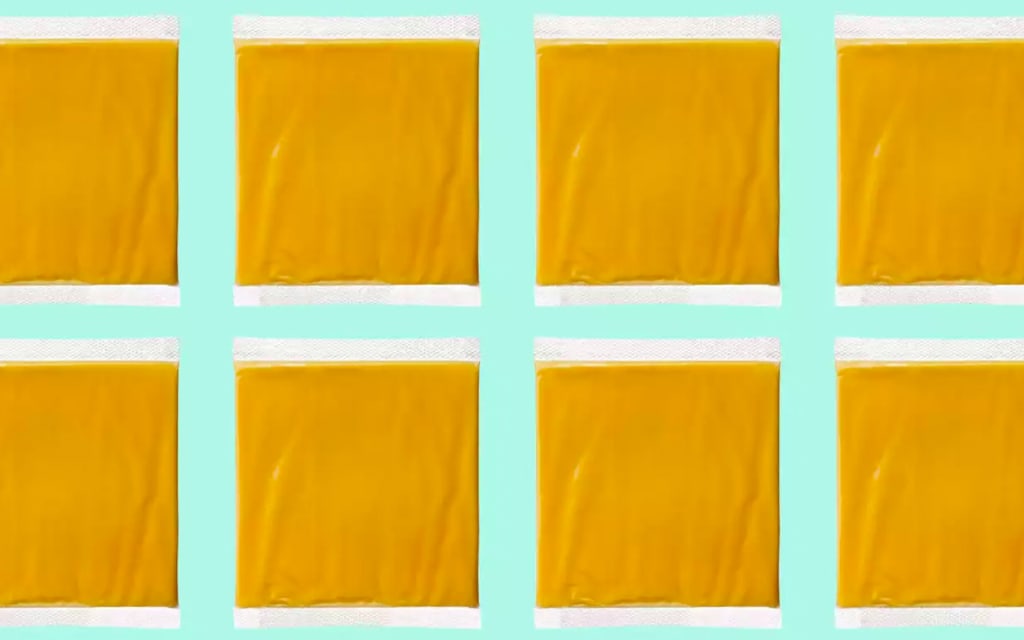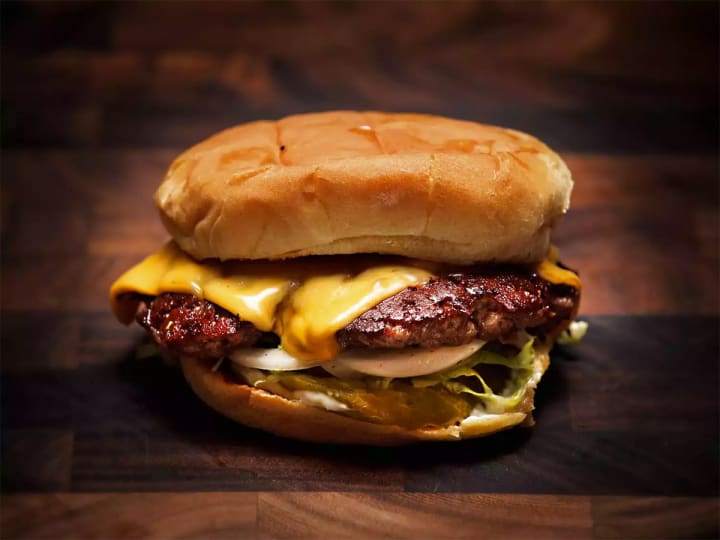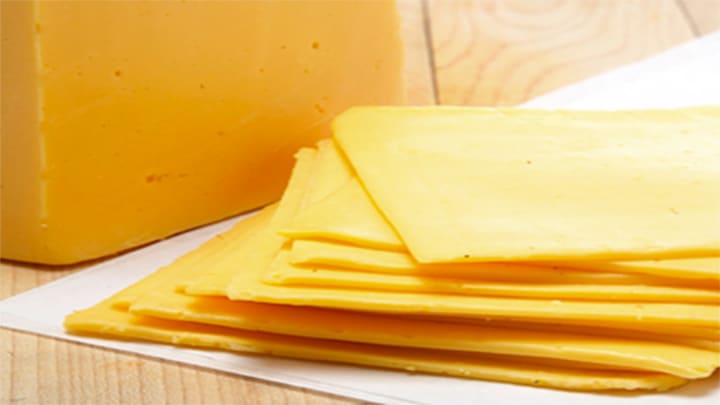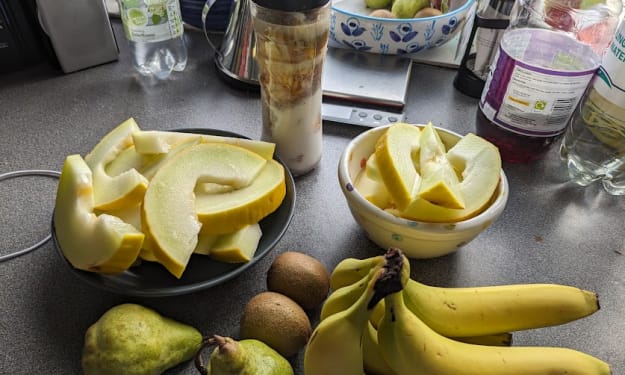
Of all the items in the dairy aisle, American cheese is certainly the most controversial. Ignoring the contentious debate over nutrition and taste, many would argue that both parts of its name are actually inaccurate. Not only was it invented by a Canadian and popularized abroad but many refuse to even acknowledge that it is cheese. So, is the delicious slice of melted goodness blanketing your burger patty secretly a fraud? Here is the truth about American cheese.
What Are We Talking About?

To avoid any confusion, let's establish exactly what we’re talking about. The term itself can be confusing to those who are not familiar with this variety of cheese, as there are many types of cheese produced in the United States but only one is commonly honored (or insulted) with the title “American.” Additionally, there is no uniform flavor, color, or texture for what may be labeled “American cheese.”
The differences between American and similar cheeses may be difficult to distinguish at times but those who desire a slice can find it all around the world. When a cheese is labeled American, it is referring to a processed, often yellow, cheese that is served as an individually wrapped slice. It can also be found in white and orange. American cheese is defined by a lower melting point than other alternatives, making it popular on hamburgers and in grilled cheese sandwiches.
A Rich History

Now that we have established what exactly American cheese is, let’s learn a little more about where it came from. Americans have been producing and exporting cheese since before the country gained its independence. However, the product we know today was not invented until the 20th century. Processed cheese was originally created in Switzerland and quickly made its way to the United States, where it became extremely popular. Luckily for varieties of Emmental, the name Swiss cheese was taken.
The earliest forms of what would come to be called American cheese were simple mixes of two blends of two different types, often cheddar and Colby. Such mixes were created to make the cheese melt at lower temperatures without becoming a liquid and also provide a more appetizing flavor. These cheeses were processed but still made from the real stuff and most would have still been produced locally, without being individually sliced or packaged.
The history of American cheese and indeed the country itself changed at the beginning of the 20th century. Canadian-American entrepreneur and world famous cheese monger James L. Kraft developed a new process for pasteurizing cheese in 1916 to prevent it from spoiling. As a result, his Illinois based company, Kraft Foods Inc, grew quickly along with demand for its cheese. During his time at the head of his eponymous company, Kraft Foods introduced the country to Velveeta and Miracle Whip as well as the iconic individually wrapped slices of cheese.
Due to its shelf life, texture, and taste, processed cheese became wildly popular in America and replaced blocks of more traditional varieties. While the term American cheese had been used before this period to refer to cheddars or other cheeses made in the United States and exported elsewhere, the ubiquity of this new product in grocery stores throughout the country earned the title of American cheese throughout the world as well as at home.
So Is It Cheese?

You may not have noticed but the US government has very specific regulations regarding what can and cannot be labeled cheese. Even more surprisingly, the most patriotic cheese of them all does not make the cut. Don’t believe me? Next time you’re at the grocery, pick up a pack of Kraft Singles and try to find the word cheese. Spoiler alert, it’s not in the name and if it actually appears at all the item is labeled a “cheese product.”
Technically, Kraft Singles and similar products are “pasteurized process cheese food.” As defined by law, such items must maintain an actual cheese content of 51 percent or higher as well as meet other specified limits for added ingredients, fat content, and moisture. While they are the most common and recognizable, Kraft Singles and other pasteurized process cheese foods are not the only type of product that could be labeled American cheese.
The Food and Drug Administrations maintains four distinct categories of products that the average consumer would call American cheese. “Pasteurized process cheese spreads” require similar levels of cheese and fat but must maintain a higher moisture content than pasteurized process cheese food. Such products are common in macaroni products and include Velveeta and Cheeze Wiz.
The closest thing to authentic cheeses like gouda or gorgonzola is “pasteurized process cheese.” These products are created by mixing one or more cheeses together, similar to the earliest forms of American cheese that were created before large scale industrial production. Pasteurized process cheese may also contain other ingredients such as coloring or spices and the limits for moisture and fat content are clearly defined.
On the other end of the spectrum are “pasteurized process American slices.” These products are actually vegetable oil-based and are designed to mimic the flavor and texture of dairy based alternatives. Pasteurized process American slices are the farthest thing from a real cheese and most likely to arouse the ire of cheese purists.
So, when people say “American cheese is not REAL cheese” they are likely referring to either pasteurized process American slices or cheese spreads, but what about the first two categories? Let’s start with so called cheese food like Kraft Singles. While it does need to contain a bare majority of cheese, 49 percent of the ingredients may be something else entirely. The flavor and texture may come close to real cheese but this is often accomplished by including different flavoring agents and other chemicals.
While some readers may disagree, the the ingredient mix for Kraft Singles and similar products make it hard to justify calling it cheese. Pasteurized process cheese is harder to dismiss. While these products may also be mixed with other ingredients, many are created by simply melting two different types of cheese together and the results are delicious as well as authentic.
Still, if three out of the four categories of so called American cheese are questionable at best or do not even contain dairy, it is easy to see why so many refuse to call such products cheese. Putting this debate aside, many of its staunchest critics still find American cheese delicious and the taste preferences of its native country are a big reason why the name persists. Wisconsin may be known for Colby and Vermont makes famous cheddar but there is still only one American cheese (even if it isn’t actually cheese).
About the Creator
Dave Lee
Self proclaimed master of the microwave, capable of creating delicious meals in less than 5 minutes






Comments
There are no comments for this story
Be the first to respond and start the conversation.